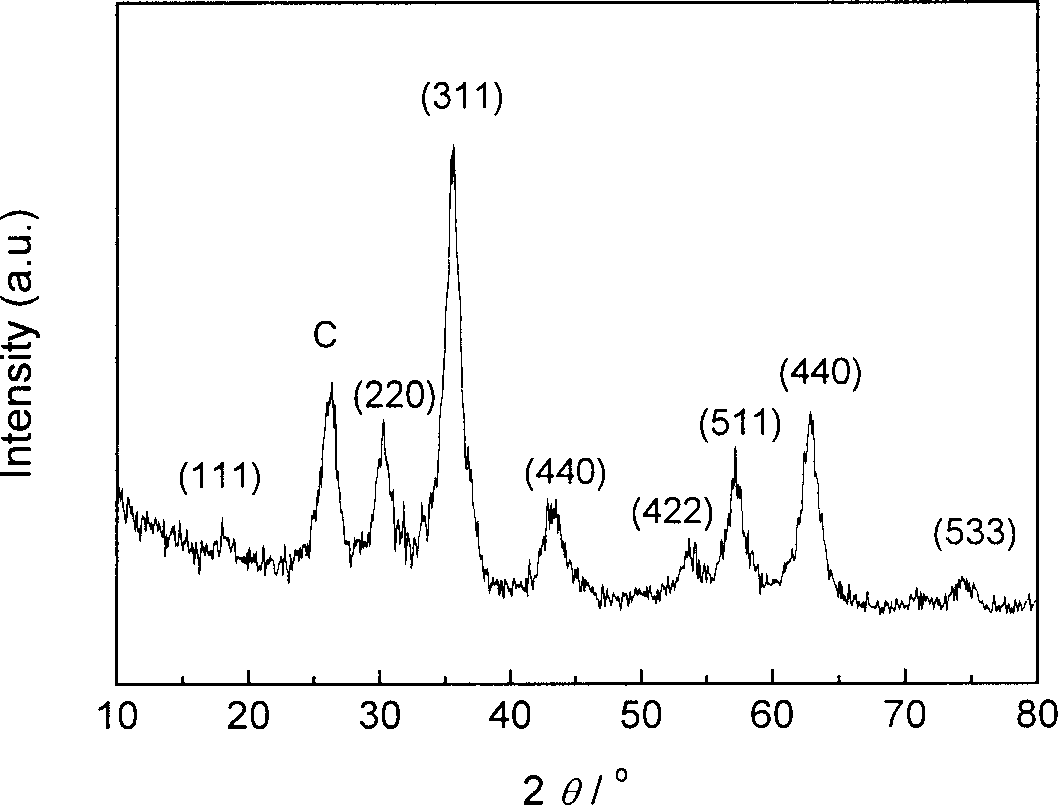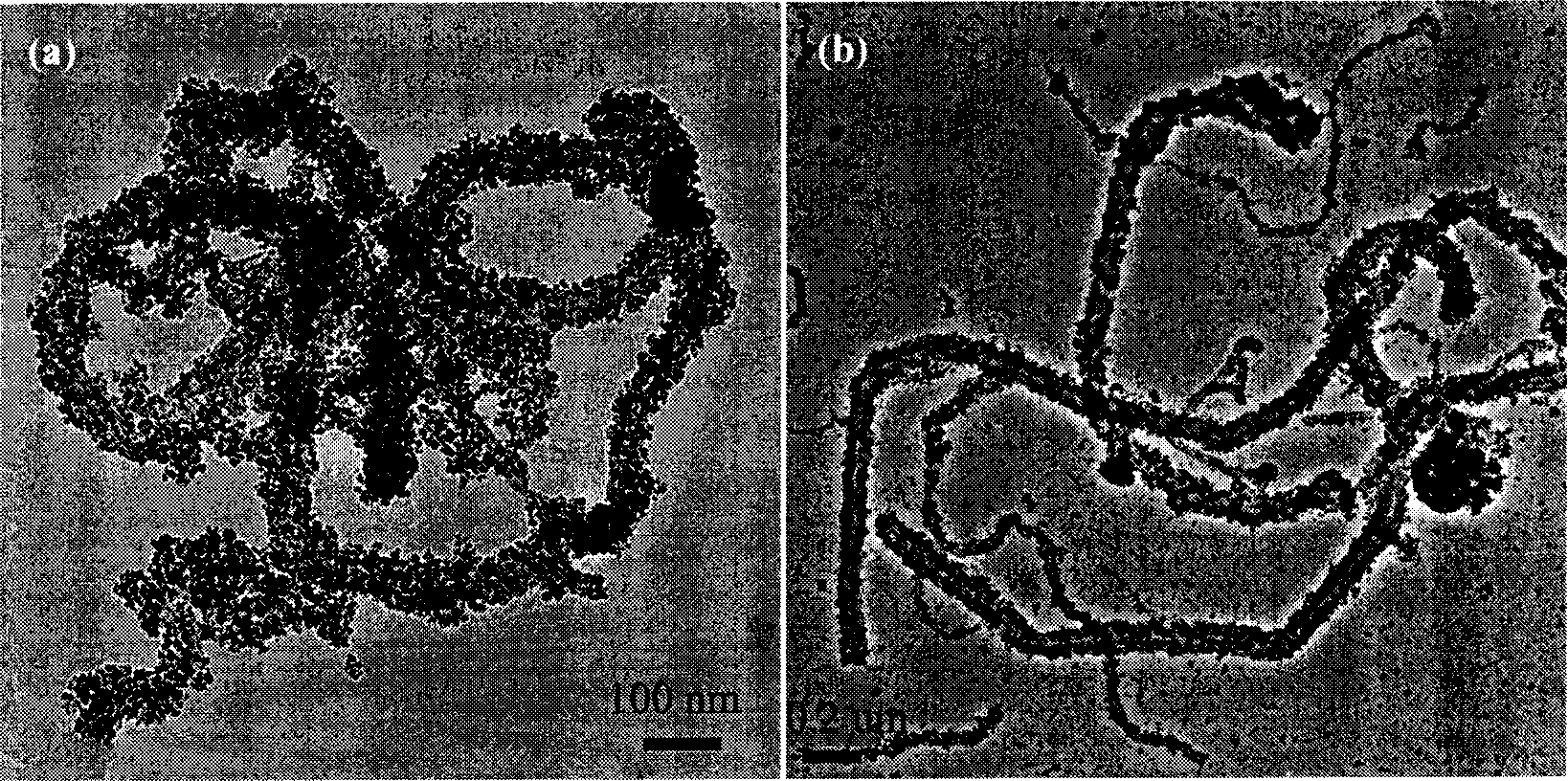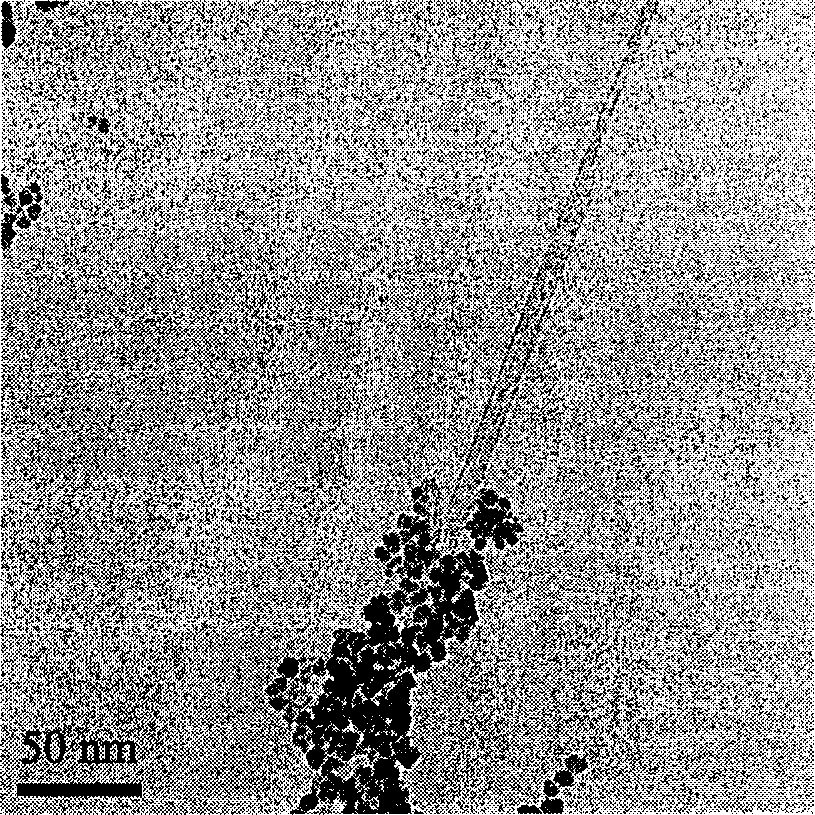Magnetic composite powder for ferroferric oxide nanometer crystal modified carbon nanometer pipe and its preparation method
A technology of ferroferric oxide and carbon nanotubes, which is applied in the direction of magnetic objects, magnetic materials, inductors/transformers/magnets, etc., can solve the problems of few research reports on the orientation of carbon nanotubes, achieve high wrapping rate and simple process Effect
- Summary
- Abstract
- Description
- Claims
- Application Information
AI Technical Summary
Problems solved by technology
Method used
Image
Examples
Embodiment 1
[0025] The multi-walled carbon nanotubes were baked in an oven at 140° C. for 24 hours to remove moisture in the carbon nanotubes, and then refluxed in concentrated nitric acid for 6 hours, washed with deionized water, and dried. 0.35g iron triacetylacetonate was dissolved in 50mL 2-pyrrolidone to obtain a red transparent solution. Add 100 mg of acid-treated carbon nanotubes to the above solution, ultrasonically disperse for 30 minutes, and then pour it into a three-necked bottle. One port of the three-necked bottle is connected to a condenser tube, and the other port is filled with nitrogen or argon gas, and refluxed in a silicone oil bath at 245 ° C. 0.5 hour, then naturally cooled to room temperature. A mixed solution of methanol / ether with a volume ratio of 1:3 was added to cause the product to settle, and then washed with acetone for 3 times, and dried to obtain a composite powder of carbon nanotubes wrapped with nano-Fe3O4. figure 1 The X-ray diffraction spectrum of the...
Embodiment 2
[0027] The multi-walled carbon nanotubes were baked in an oven at 140° C. for 24 hours to remove moisture in the carbon nanotubes, and then refluxed in concentrated nitric acid for 6 hours, washed with deionized water, and dried. 0.35g of ferric chloride was dissolved in 50mL of 2-pyrrolidone to obtain an orange-red transparent solution. Add 100 mg of acid-treated carbon nanotubes to the above solution, ultrasonically disperse for 60 minutes, and then pour it into a three-necked bottle. One port of the three-necked bottle is connected to a condenser tube, and the other port is filled with nitrogen or argon gas, and refluxed in a silicone oil bath at 245 ° C. 3 hours, then naturally cooled to room temperature. A mixed solution of methanol / ether with a volume ratio of 1:3 was added to cause the product to settle, washed with acetone for 5 times, and dried to obtain a composite powder of carbon nanotubes wrapped with nano-ferric oxide. figure 2 (b) is a transmission electron mi...
Embodiment 3
[0029] The multi-walled carbon nanotubes in Example 1 are replaced with single-walled carbon nanotubes, and other conditions remain unchanged, and a composite powder of ferric oxide / single-walled carbon nanotubes can be obtained. image 3 is the transmission electron microscope photo of the obtained typical ferroferric oxide / single-walled carbon nanotube composite material. At the mouth, the particle size is about 7nm. This structure is an ideal structure for single-walled carbon nanotubes to be used in electronic devices, because the ferroferric oxide is only located at its ports, and it only plays a directional guiding role and does not affect the physical properties of the tube body itself.
PUM
| Property | Measurement | Unit |
|---|---|---|
| Grain size | aaaaa | aaaaa |
Abstract
Description
Claims
Application Information
 Login to View More
Login to View More - R&D
- Intellectual Property
- Life Sciences
- Materials
- Tech Scout
- Unparalleled Data Quality
- Higher Quality Content
- 60% Fewer Hallucinations
Browse by: Latest US Patents, China's latest patents, Technical Efficacy Thesaurus, Application Domain, Technology Topic, Popular Technical Reports.
© 2025 PatSnap. All rights reserved.Legal|Privacy policy|Modern Slavery Act Transparency Statement|Sitemap|About US| Contact US: help@patsnap.com



